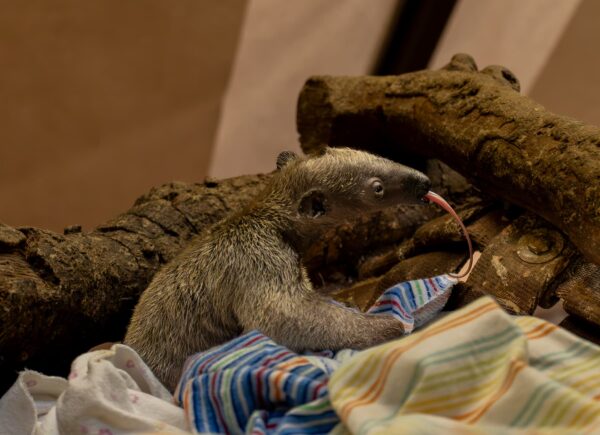The Los Angeles Zoo on Wednesday announced the arrival of its first southern tamandua pup successfully bred at the zoo.
The pup remains unnamed and was born on the evening of Aug. 28 to eight-year-old male Lou and the six-year-old female Micah. It was the first for both parents and a milestone for the zoo.
The gender of the pup will be determined later through blood work.
Senior Animal Keeper Mallory Peebles called it “a significant birth for the zoo.”
“This is the first time L.A. Zoo visitors will have the opportunity to see the species as a neonate and observe its development over time,” she said in a statement. “We are thrilled with this new addition to our zoo family and its arrival is a testament to the care and wellbeing provided by our entire team.”
The zoo’s animal care team closely monitored Micah’s health, behavior and development of the fetus through the course of her pregnancy. Keepers worked with Micah and successfully trained her to voluntarily position to allow veterinarians to perform ultrasound exams.
According to the zoo, Micah and the pup are bonding and settling nicely into their habitat.
This birth is the result of the Southern Tamandua Species Survival Plan, a cooperative breeding program between Association of Zoos & Aquariums-accredited zoos to maintain genetic diversity and sustainability in the North American zoo population.
Although southern tamanduas are classified as a species of “least concern” by the International Union for Conservation of Nature, habitat loss caused by human activities in their native South American range are a continuing threat to their survival.
Wildfires, deforestation, road construction and traffic are some of the challenges faced by the species.
Southern tamanduas, also known as lesser anteaters, are found in forests, shrublands and savannas of Colombia, Venezuela, French Guiana, Guyana, Suriname, Uruguay and Argentina.
The animals use their sharp claws and prehensile tails to climb trees and hold onto branches in pursuit of ants, termites, bees and even honey. Using their claws, they dig small holes in ant or termite nests and lick up insects as they exit.
While they don’t have teeth, they do have 16-inch-long tongues, which are covered with tiny rear-facing spines coated with thick saliva. An adult can typically consume 9,000 ants and termites per day.
Similar to other species of anteater, mothers carry young tamanduas on their backs throughout the first months of life for about one year before the babies are ready to head off on their own, as they are solitary animals, according to the LA Zoo.
Visitors to the zoo can view the newborn pup and parents in their habitat at the nursery located next to the Winnick Family Children’s Zoo.







